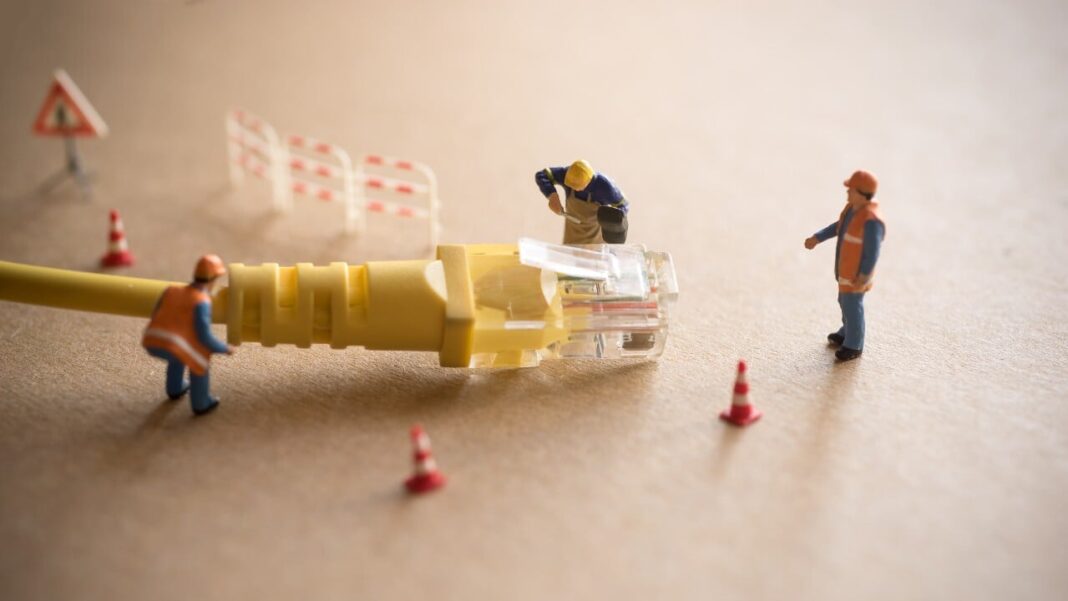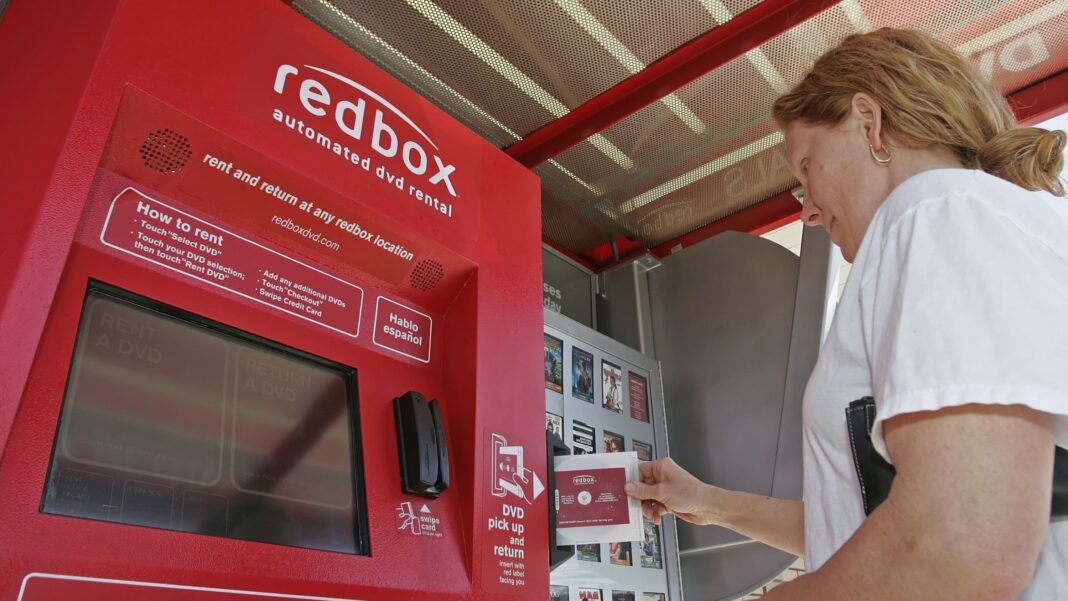With the proliferation of smart home devices, cloud gaming, and video-streaming services, maintaining a strong internet connection is more important than ever. If you’re experiencing lag while playing League of Legends, or it takes forever to download music, there’s a good chance the problem is on your end and not an issue with your internet service provider.
But what’s the issue? Before you schedule a service call with your ISP, check out our tips for troubleshooting internet connection problems.
1. Try Another Device or Website
(Credit: PCMag / Google)
Start with the obvious: Is the problem only happening on one device or all your devices? If your computer’s having problems, see if your phone or someone else’s laptop can connect to the network. If the problem only happens on one device, you can safely narrow the problem down to that particular machine.
If a specific website won’t load, try another site. If you can visit other websites just fine, it’s likely that the problem is with the website you’re trying to visit, and you’ll have to wait for them to fix things on their end. Try typing the website’s address into downforeveryoneorjustme.com or downdetector.com to see if there’s a known service outage.
If there is no known outage, it could be an issue with your browser’s cache. You may want to try visiting the site in a private browsing window or from a different browser to see if that fixes the connection problem. And clear your browser’s cache and cookies.
2. Check the Wi-Fi Settings
(Credit: PCMag / Apple)
Check the Wi-Fi settings on your device and make sure you are connected to the proper SSID. If not, you may be accidentally connected to the wrong network by default. Windows users and those with macOS Monterey or older can change the connection priority to ensure you can connect to the correct network. Alternatively, you can deselect the auto-connect option next to any unwanted network names.
(Credit: PCMag / Microsoft)
If you’re connected to the right network and still have problems, Windows can help you diagnose the issue. Right-click on the network icon in the system tray and select Troubleshoot problems (Windows 10) or Diagnose network problem (Windows 11) to run the Windows Network Diagnostic routine. This can sometimes correct common issues by resetting the adapter.
You can also check your network adapter settings under Network and Sharing Center in the Control Panel to make sure the adapter is using the correct gateway address and other settings.
3. Check Your Internet Package
(Credit: PCMag / Ookla)
If your internet is working, but it’s slower than expected, it may be time to doublecheck with your ISP on what speeds you should be getting. Head to a site like Speedtest.net and run a speed test. You’ll get a number in megabits per second denoting the speed your computer is actually experiencing. From there, open to your ISP’s website and check the latest bill.
(Credit: Whitson Gordon)
If the number on your bill is the same as your speed test, then you’re getting the correct speeds you pay for. If that feels too slow, you’ll need to upgrade to something faster. If your speed test is significantly slower than the speed you pay for, then you are indeed having problems, and should continue with troubleshooting.
4. Scan for Viruses
(Credit: AVG Technologies)
Sometimes your internet connection can be affected by malicious code on your computer. Spyware, viruses, and malware can each have a significant impact on your web-surfing speed and overall system performance. If nothing else is making sense, do a virus scan to be sure.
Windows comes with Windows Defender built in, which can do the job nicely, though there are plenty of free and paid utilities available as well. And yes, even if you have a Mac, you should still invest in good antivirus software—despite what you might have heard, they are not immune to infection.
5. Bypass Your DNS Server
(Credit: PCMag / Microsoft)
When you type a website into a browser, your computer looks up the IP address of that website using a Domain Name System server. Occasionally, these servers can have problems, making it difficult to visit websites using their friendly domain names (like PCMag.com). It’s like having a working phone with no contact list—you technically have the ability to call people, but you don’t know anyone’s number.
You can try to fix the issue by flushing your DNS cache. Sometimes these things get stuck, and hitting reset can help. Otherwise, change the DNS server outright, either on an individual device or at the router level so it affects everything on the network.
6. Decode the Blinking Lights
If you can’t connect to the internet at all, take a look at the modem and/or router and any LED status indicators. If some of the lights are on, but some aren’t—or they’re flashing repeatedly—you’ll want to look more closely at what they’re saying. Check the documentation for the modem and/or router to diagnose what these lights mean.
For example, if your router’s network light is on but the Wi-Fi lights aren’t, you may need to press the Wi-Fi button on the side, or re-enable Wi-Fi from its configuration menu. Your modem’s lights may be flashing rather than solid, which could mean it’s unable to find an internet connection, necessitating a new modem (or a call to your ISP).
If none of them are lit up, then the modem or router is likely off. Check to make sure that nothing has been accidentally unplugged and that the power switch (if there is one) is turned on. Otherwise, disconnect the power cords and wait a minute or two. If the modem and router are separate, plug in the modem first. If the lights turn on, you can then plug in the router. If you still don’t see lights after plugging them in, it could be a failed power adapter, a faulty power strip, or a fried router.
7. Check Your Bandwidth
(Credit: PCMag / Microsoft)
It’s possible that everything is working properly, but a program on your computer is using up all the bandwidth. On Windows, open up the Task Manager by pressing Ctrl + Shift + Esc and click on the Network column to sort by network usage. On a Mac, press Command + Space to open Spotlight, type “Activity Monitor,” and head to Activity Monitor’s Network tab.
(Credit: PCMag / Apple)
If a certain app is using a lot of bandwidth—like if you’re downloading a big file—you may just need to wait until that process is finished, or cancel it to free up bandwidth on the network. If you don’t see any obvious culprits, see if someone else in the house is downloading a large file on their machine, and tell them to knock it off.
If someone’s using a game streaming service, for instance, there are ways to prevent them from hogging all the bandwidth on the network. There’s also always the chance that a neighbor is stealing your Wi-Fi. We have instructions on how to see who is on the network and kick them off.
8. Get a Better Signal
Google Nest Wi-Fi (Credit: Zlata Ivleva)
If you’re using Wi-Fi, there are plenty of problems that can slow down the connection. Try connecting your computer directly to the router with an Ethernet cable. If that solves the problem, then the Wi-Fi signal is poor enough to degrade your internet speed.
Check the Wi-Fi icon on your computer: How many bars do you have? If you’re low on bars, you may need to move the router to a more central location in the house, or buy a Wi-Fi extender. (If you already have an extender, it may just be poor quality—a mesh system will probably do a better job).
If you have full bars but there are a lot of Wi-Fi networks in the building, it may just be too congested, and changing the channel or using the 5GHz band may help solve the problem. Check out our guide to boosting your Wi-Fi signal for more tricks to improving reception.
Recommended by Our Editors
9. Update Your Firmware
(Credit: PCMag / Trendnet)
Firmware is the low-level embedded software that runs your modem, router, and other network hardware. Most vendors provide downloadable firmware updates that can resolve performance issues, add new features, and increase speed. If there’s a known issue with your router, it’s possible an update will iron things out.
Look for the firmware update tool in the System section of your router’s settings and follow the instructions carefully to ensure that you’re installing the correct firmware version. Do not download firmware from a third-party site.
10. Wipe Your Settings Clean
(Credit: PCMag / Asus)
If you previously changed any router settings, and now there’s a problem, try resetting to the factory default configuration. For most routers, this involves pressing a very small reset button on the rear panel and holding it down for several seconds until the LED lights begin flashing, but there may also be a reset option in the settings menu.
Once reset, you can log into the web interface and set it up from scratch as if you’re hooking it up for the first time. Just be careful not to enable the same setting that caused the problem in the first place.
11. Upgrade to a Faster Router
(Credit: Acer)
If you’re using an older 802.11b or 802.11g router, you may want to consider upgrading to a newer, more powerful one, especially if you have multiple computers, smartphones, and other devices vying for bandwidth. A dual-band router gives you two radio bands to choose from and allows you to dedicate a band to clients that require lots of bandwidth, like streaming video devices and gaming consoles. A tri-band will offer three bands, and can support even more activity on your network.
Moreover, newer routers employ the latest technologies to deliver speedy throughput, with enhanced Wi-Fi range. The latest router standard is 802.11ax, also known as Wi-Fi 6, and it’s enhanced version Wi-Fi 6E. Check out our list of the best wireless routers when you’re ready to take the plunge.
12. Head to the Source
A coaxial cable splitter (Credit: RadioShack)
If troubleshooting your modem and router doesn’t help, the problem may come from further down the line. Inspect the connection coming into your home. This is usually located on the side of your house, and may or may not be housed in an enclosure. Make sure that the main cable hasn’t been chewed up by squirrels or knocked loose by a storm. (If you have Starlink, we can help you repair a damaged cable).
If you see a cable splitter, make sure each connection is tight and the connectors are properly crimped. If the splitter looks suspect (i.e., rusty or dirty), try replacing it. Cheap splitters can also degrade signal strength, so if you don’t need to split the signal, try getting rid of it altogether.
13. Last Resort: Dial Up Your ISP
If you’ve tried everything and are still experiencing internet connection woes, it’s time to call your service provider. Some providers even offer chat support. The problem could be on their end, and may require a new connection at the pole coming into your house or new equipment, such as a better modem or an amplifier.
If you’re experiencing slowdowns at certain times of the day (think after school and work hours), it’s possible that your ISP is simply unable to handle the increased user load, in which case you may want to find a new service provider. Lucky for you, we’ve tested them to find the best ISPs in the country.
Disclosure: Downdetector and Speedtest.net are owned by Ookla, a subsidiary of PCMag’s parent company Ziff Davis.
Get Our Best Stories!
Sign up for What’s New Now to get our top stories delivered to your inbox every morning.
This newsletter may contain advertising, deals, or affiliate links. Subscribing to a newsletter indicates your consent to our Terms of Use and Privacy Policy. You may unsubscribe from the newsletters at any time.
About John R. Delaney
Contributing Editor

Read the latest from John R. Delaney
About Whitson Gordon
Contributing Writer






















